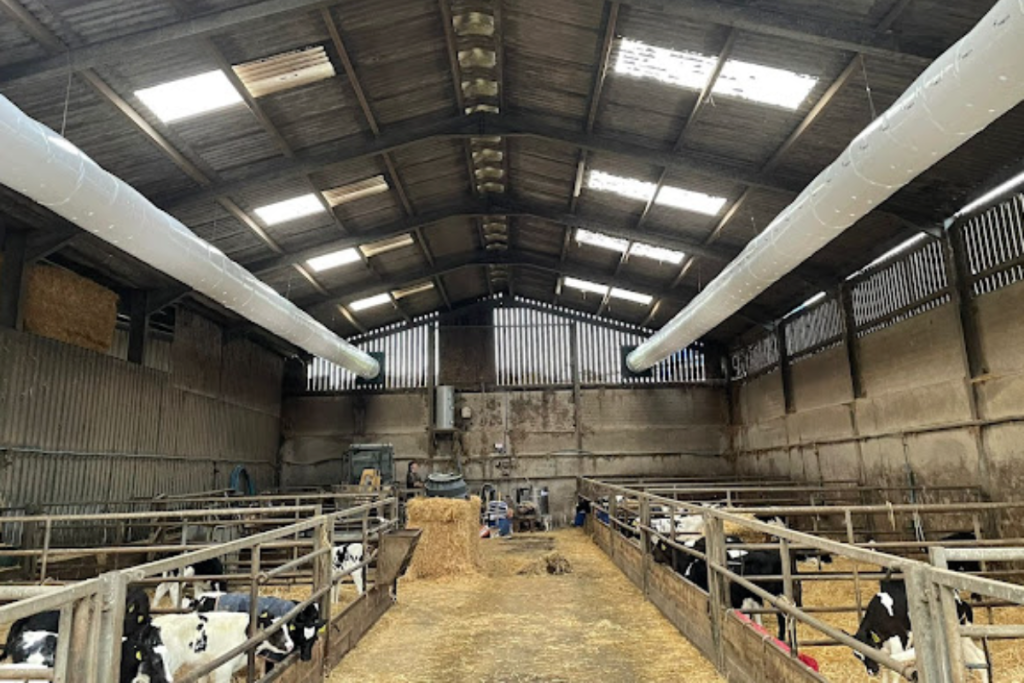Proper ventilation is a critical aspect of dairy farming operations, and calf housing is no exception. Calves are particularly sensitive to environmental conditions, and providing them with a comfortable and well-ventilated living space is essential for their health, growth, and overall well-being. In this blog post, we will explore the importance of calf vents and how they contribute to creating an optimal environment for young calves on dairy farms.
- Air Quality and Respiratory Health: Calves are highly susceptible to respiratory issues, and poor air quality can significantly impact their health. Calf vents play a vital role in maintaining good air circulation, preventing the buildup of harmful gases, such as ammonia and carbon dioxide, and reducing the risk of respiratory diseases. Proper ventilation ensures a constant supply of fresh air and helps remove dust, moisture, and pathogens that may compromise calf respiratory health.
- Temperature Regulation: Maintaining an appropriate temperature is crucial for calf comfort and growth. Calf vents assist in regulating temperature by allowing the exchange of air between the inside and outside of the housing facility. During hot weather, vents facilitate the removal of excess heat, preventing heat stress and promoting a cooler environment for the calves. In colder conditions, vents help prevent the accumulation of stale air and moisture, reducing the risk of respiratory illnesses associated with dampness.
- Reduction of Humidity and Condensation: Excessive humidity can create a damp environment that promotes bacterial growth and poses health risks for calves. Calf vents aid in reducing humidity levels by allowing moisture to escape and fresh air to circulate, preventing the formation of condensation on surfaces. Effective ventilation helps keep the calf housing dry, minimizing the occurrence of diseases like pneumonia and improving overall hygiene conditions.
- Odor Control: The accumulation of odors can be a concern in calf housing facilities, affecting both calf and worker comfort. Calf vents help to dissipate odorous gases by improving air movement and reducing their concentration. Proper ventilation, along with regular cleaning practices, can significantly enhance the overall air quality and odor control within the calf housing area.
- Enhanced Growth and Development: Optimal ventilation has a positive impact on calf growth and development. By ensuring a comfortable and healthy environment, calf vents contribute to reducing stress levels and improving feed intake. When calves are exposed to fresh air, free from excessive heat or humidity, they can focus their energy on growth and immune system development, leading to healthier and more robust animals.
Conclusion: Investing in proper calf ventilation is a fundamental aspect of maintaining a productive and sustainable dairy operation. The benefits of calf vents extend beyond mere comfort, impacting the respiratory health, temperature regulation, humidity control, odor reduction, and overall growth and development of young calves. By prioritizing good ventilation practices, dairy farmers can provide their calves with an optimal environment conducive to their well-being and long-term success.
Remember, each calf’s welfare is crucial in shaping the future of your dairy farm. So, let fresh air and proper ventilation be the breath of life for your calves, fostering their health and growth from the very beginning.

